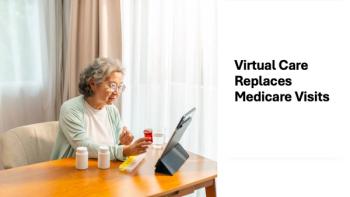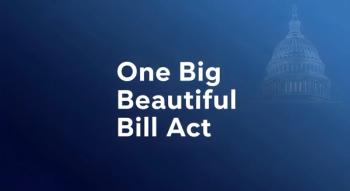
The Oncology Care Model Provides a Framework for the New Enhancing Oncology Model
The new model starts in July 2023. Practices will be required to take on two-sided risk right from the start.
The Centers for Medicare and Medicaid Innovation released the Performance Period (PP) 9 results for the Oncology Care Model (OCM), and they show that The US Oncology Network (The Network) practices achieved remarkable success.
But OCM is winding down. It’s successor, the Enhancing Oncology Model (EOM), will start in July 2023.
Many elements in the OCM provide a bridge to the new model, so practices that did well in the OCM stand a good chance of succeeding with the EOM. Taking a closer look at The Network PP9 results, how this success was achieved, as well as the key elements of the EOM, may provide some insight into how practices can thrive with the new model.
OCM success
Through PP9, fourteen practices in The US Oncology Network participated in the OCM, achieving remarkable success with the program:
- Comparing 2016 to 2020, emergency department visits declined 24% across the 14 participating practices, hospice utilization greater than three days before death increased by 11%, and hospitalizations, a measure CMS eliminated but still tracked by The Network, decreased by 37%.
- 100% (14/14) achieved a 100% performance multiplier for the last two performance periods.
- Pain and depression measures improved from measure inception through PP9. For pain,13 of 14 practices achieved 10/10 points in PP9, while nine of 14 practices achieved 10/10 points for depression.
- Patient experience steadily improved through PP9 from PP3 when CMS first measured it.
- On total cost, 86% of The Network practices beat their benchmark amount compared to 75% for all OCM practices nationwide.
Since the OCM launched in July 2016, just over 125,000 unique patients were enrolled by The Network practices through May 2022, receiving high-quality care in a convenient community setting.
Ramp-up activities
The US Oncology Network achieved noteworthy success in the OCM, thanks to a well-orchestrated collaboration between The Network and practices. Months before the launch, The Network began developing critical core processes and putting resources in place through pilot programs, enabling practices to fine tune their operations ahead of time.
Work groups were formed to define different aspects of the model and what was needed to meet requirements. Tool kits and best practices were developed for pain, depression, ED and hospital utilization, hierarchical condition category documentation and advance care planning. Technology tools were also introduced to support the treatment plan, quality measurements and decision-making at the point of care.
Drugs became an important focus as practices moved further into the model, since they comprise much of total costs. Practices utilized biosimilars that offered significant cost savings and focused in even more on using drugs wisely by instituting multiple drug initiatives.
There were many different playbooks and resources that had to carefully come together to enable practices to adopt these new ways of providing care. The Network worked closely with local quality committees to prioritize the variety of opportunities that were identified to make a difference, helping to keep practices on track for success.
Transitioning to EOM
There are many similarities between the OCM and the new Enhancing Oncology Model. Both have goals to improve quality of care and the patient experience while reducing costs. Six of the eight redesign activities in the EOM are carry-overs from the OCM.
There are substantial differences, however. The EOM has an additional goal of making cancer care more accessible and equitable by addressing health disparities. It also is only focused on seven cancers, although they are among the most common ones. Narrowing the number of cancers included in the model reduces the number of patients, increasing potential risk especially to medium or small practices. Fewer patients means into fewer episodes of care, resulting in less up-front funding for new resources and patient services.
Additionally, practices will immediately start with two-sided risk in EOM. OCM allowed one-sided risk for the first few years before practices had to decide whether to change their risk status.
Two new redesign activities have also been added: screening for health-related social needs (HRSNs) and implementation of electronic patient reported Outcomes (ePROs).
Practices should start gathering the facts they need to make a decision about whether the new program is the best option for them. Those in the OCM have a leg up on this decision-making stage, as they have baseline data to help evaluate how the future might look with this new model.
Collaboration is key
The US Oncology Network is committed to working diligently to bend the cost curve, as we believe delivering superior care at sustainable costs is essential for patients to continue to have access to the care they need. The work we are doing across The Network with value-based models such as the OCM is helping to prove community oncology is the place to make that happen. However, success will require collaboration with all stakeholders. Patients, providers, practices, payers and programs must all be aligned with the common goal of providing holistic, cost-effective quality care to achieve the best possible outcomes and patient experiences.
Note: The statements contained in this document are solely those of the authors and do not necessarily reflect the views or policies of CMS. The authors assume responsibility for the accuracy and completeness of the information contained in this document.
Stuart Staggs is senior director, stratetgic programs, at The US Oncology Network, which is supported by McKesson.
Newsletter
Get the latest industry news, event updates, and more from Managed healthcare Executive.



















































